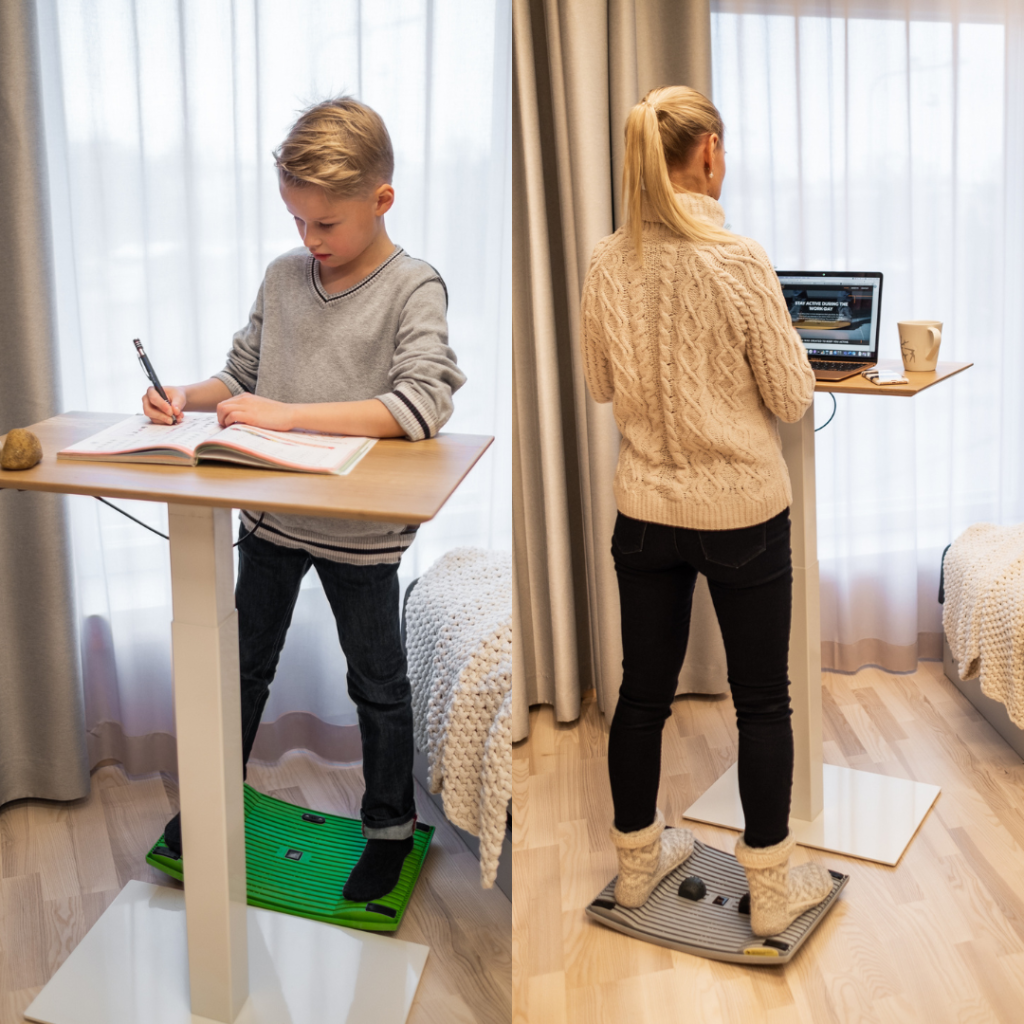Teachers can set up ergonomic workstations to prevent lower back pain by adjusting their chair height so feet rest flat on the floor, positioning their desk at elbow height, placing their computer monitor at eye level, and using a supportive chair with proper lumbar support. It’s equally important to incorporate movement throughout the day by alternating between sitting and standing positions and taking regular microbreaks for stretching. Creating an adaptable workspace that promotes good posture and regular movement is key to preventing the strain that leads to lower back pain.
Understanding the ergonomic challenges teachers face
Teachers encounter unique ergonomic challenges that put them at high risk for developing lower back pain. Unlike typical office workers, teachers rarely stay in one position throughout their workday. They frequently transition between sitting at their desk, standing at the board, bending over to assist students, and moving around the classroom.
The physical demands of teaching include prolonged periods of standing, which can strain the lower back muscles and lead to fatigue. When helping individual students, teachers often bend awkwardly over desks that are designed for children rather than adults, forcing their spine into uncomfortable positions.
Additionally, classroom furniture is rarely adjustable, meaning teachers must adapt to their environment rather than having a workspace that adapts to them. Many teachers also carry heavy materials between classrooms or to and from school, adding further strain to their backs.
These varied physical demands, combined with the mental stress of teaching, create a perfect storm for developing musculoskeletal issues, particularly in the lower back region.
What causes lower back pain in teachers?
Lower back pain in teachers typically stems from several common factors related to their daily activities and work environment. Poor posture is perhaps the most significant contributor, whether it’s slouching while grading papers or leaning forward while writing on the board.
Prolonged static positions are equally problematic. When teachers maintain the same posture for extended periods—such as standing during lectures or sitting during marking—muscle fatigue sets in and places excessive pressure on spinal discs.
Frequent bending and stooping to interact with students at their desks forces the spine into awkward positions. This repeated flexion puts strain on the lower back muscles and ligaments, especially when done with improper mechanics.
Other contributing factors include:
- Inadequate seating that lacks proper lumbar support
- Improperly adjusted workstations that cause teachers to hunch or reach
- Insufficient movement breaks throughout the teaching day
- Stress-induced muscle tension that compounds physical strain
- Carrying heavy teaching materials, books, or laptops between classrooms
Understanding these causes is the first step toward creating preventative strategies that can help teachers avoid developing chronic back issues.
How should teachers set up their desk and chair for proper ergonomics?
Setting up your teaching desk and chair correctly forms the foundation of an ergonomic workstation. Start with your chair height—adjust it so your feet rest flat on the floor with knees at approximately 90 degrees. Your chair should provide adequate lumbar support that maintains the natural curve of your lower back. If your chair lacks built-in support, consider adding a small cushion or rolled towel.
Position your desk at elbow height. When seated with shoulders relaxed and arms at your sides, your elbows should bend at 90 degrees with forearms parallel to the floor. This positioning reduces strain on your shoulders, neck, and back during keyboard work.
For computer monitors, the top of the screen should sit at or slightly below eye level, about an arm’s length away. This prevents the forward head posture that strains the neck and upper back, which can lead to referred pain in the lower back region.
Keep frequently used items within easy reach to avoid excessive stretching or twisting. Your keyboard and mouse should be positioned to allow your wrists to remain neutral, not bent upward or downward.
If you alternate between sitting and standing, ensure your standing desk height allows your elbows to maintain the same 90-degree angle as when seated. This consistent positioning helps maintain good posture regardless of your working position.
What ergonomic accessories can help prevent teacher back pain?
The right ergonomic accessories can significantly reduce the risk of developing lower back pain in the classroom. An active sitting solution, such as a balance ball chair or wobble stool, engages your core muscles while seated, promoting better posture and allowing subtle movement that keeps back muscles from becoming stiff.
Anti-fatigue mats are valuable for teachers who stand for extended periods. These cushioned mats reduce pressure on your spine and joints, lessening the fatigue that often leads to poor posture and subsequent back pain.
Document holders position papers at eye level beside your monitor, eliminating the need to look down repeatedly while typing, which strains the neck and upper back. Similarly, a properly positioned laptop stand can bring your screen to the correct height, preventing the hunched posture that often leads to back issues.
Other helpful accessories include:
- Adjustable footrests to support proper sitting posture
- Standing desk converters that allow easy transitions between sitting and standing
- Ergonomic keyboard and mouse designs that maintain neutral wrist positions
- Wheeled teaching carts to avoid carrying heavy materials
The key is finding tools that support natural body alignment and encourage movement throughout your teaching day.
How can teachers incorporate movement throughout their teaching day?
Incorporating regular movement is perhaps the most effective strategy for preventing lower back pain in teaching environments. Even with the perfect ergonomic setup, staying in one position for too long causes muscle fatigue and stiffness.
Set a timer to remind yourself to change positions every 30 minutes. This might mean alternating between sitting and standing or simply taking a short walking break around the classroom. Even small movements help to relieve pressure on your spine and improve circulation.
Consider modifying your teaching methods to include more active approaches. Instead of remaining at the front of the classroom, move around while lecturing. Use station-based activities that require you to circulate among students, naturally varying your posture and movement patterns.
Quick microbreak exercises can be done discreetly throughout the day:
- Shoulder rolls and gentle neck stretches while students are working independently
- Calf raises while standing at the board
- Subtle back extensions by placing hands on lower back and gently arching backward
- Brief walking breaks between classes or during prep periods
If possible, incorporate standing meetings with colleagues rather than always sitting. These small changes add up to significant benefits for your back health over time.
Key takeaways for maintaining a healthy back in the classroom
Creating a back-friendly teaching environment requires a combination of proper setup, supportive equipment, and mindful habits. Remember that prevention is always easier than treatment when it comes to lower back pain.
Prioritize proper posture whether sitting or standing, and be conscious of how you bend and lift when interacting with students or materials. Design your workspace to support neutral positions, with everything you need easily accessible to minimize awkward reaching or twisting.
Make movement a non-negotiable part of your teaching routine. Regular position changes and stretching breaks are not luxuries—they’re necessities for maintaining back health in a physically demanding profession.
Listen to your body’s early warning signs. If you feel discomfort, address it immediately by adjusting your position or taking a quick movement break rather than pushing through the pain.
At Gymba, we understand the unique challenges teachers face. Our ergonomic solutions, like the Gymba Activation Board, can help you incorporate subtle movement even while standing at your desk, promoting better circulation and reducing the strain that leads to lower back issues. By creating a workspace that adapts to your needs and supports your body’s natural desire for movement, you can enjoy teaching without the burden of back pain.

